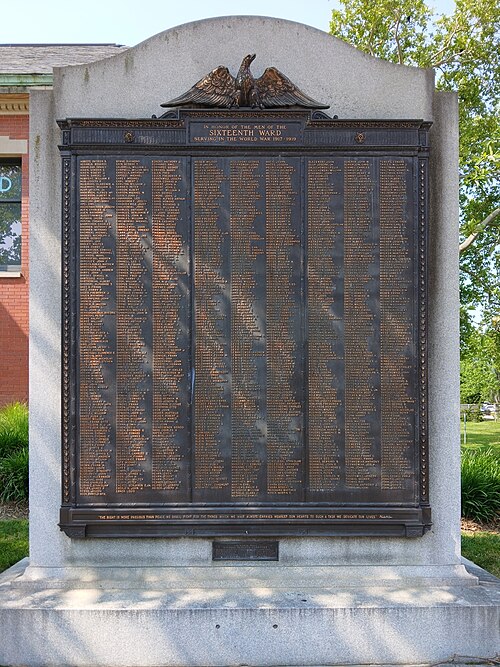
Since old Pa Pitt has made it a rule to record all the names on every war memorial he photographs, this picture is huge—about 50 megapixels. If you enlarge it, all the names should be legible, from Abbott to Zorn.
Comments

Since old Pa Pitt has made it a rule to record all the names on every war memorial he photographs, this picture is huge—about 50 megapixels. If you enlarge it, all the names should be legible, from Abbott to Zorn.
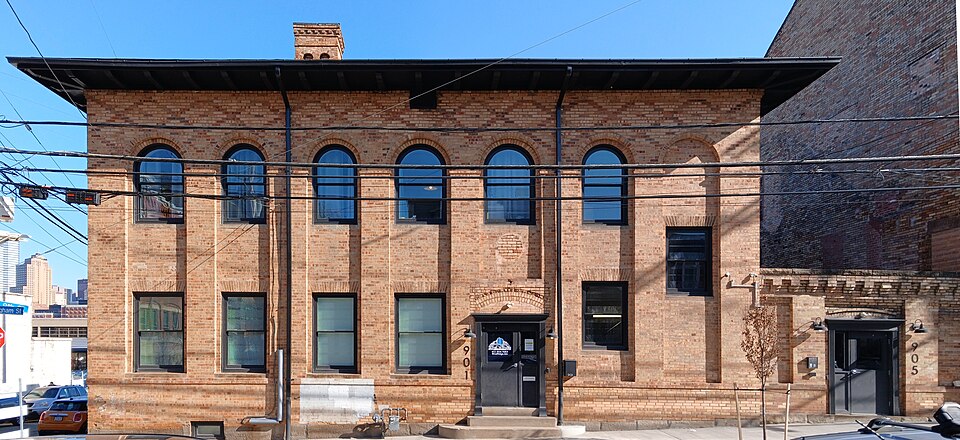
Longfellow, Alden & Harlow were the architects of this elegant little building in a simplified Renaissance style, which was finished in 1895. It does its best to convince us that the men who run the foundry are civilized people, in spite of the soot that surrounds them. The larger shop building behind it, built in 1901, was designed by Alden & Harlow, after the firm had decided to divide up the work, with Longfellow remaining in Boston and Alden & Harlow taking all the Pittsburgh jobs.
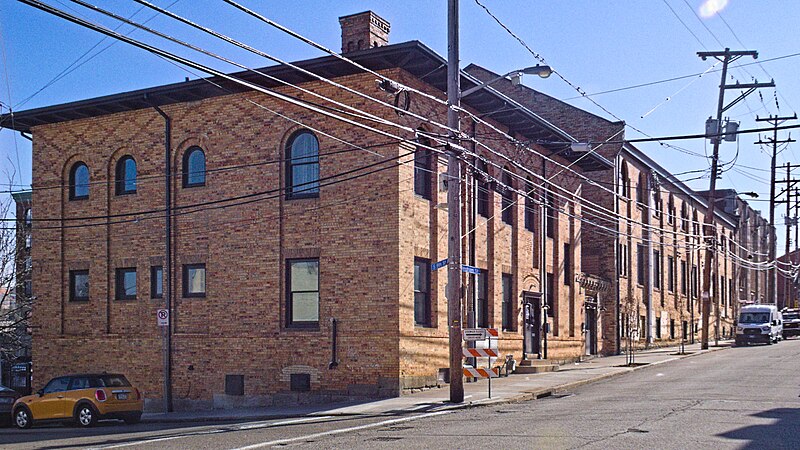
These buildings sat derelict and open to the weather for years, but have been cleaned up and put back together very neatly.
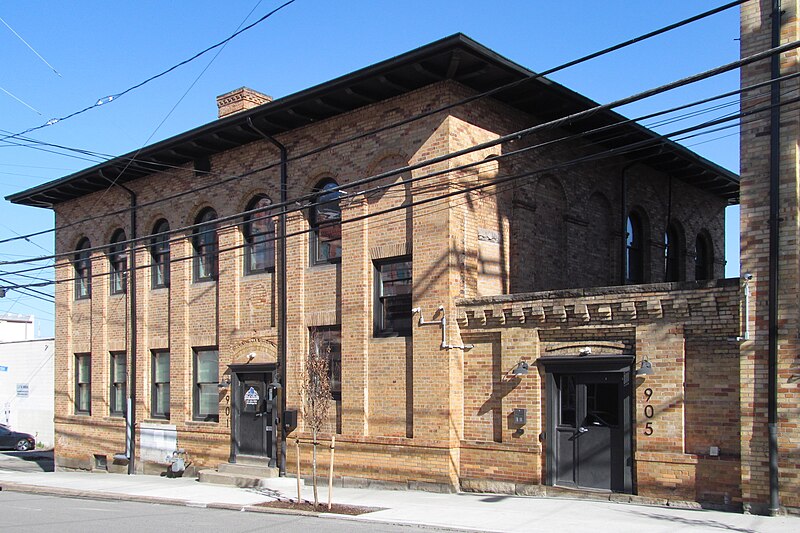
Map.
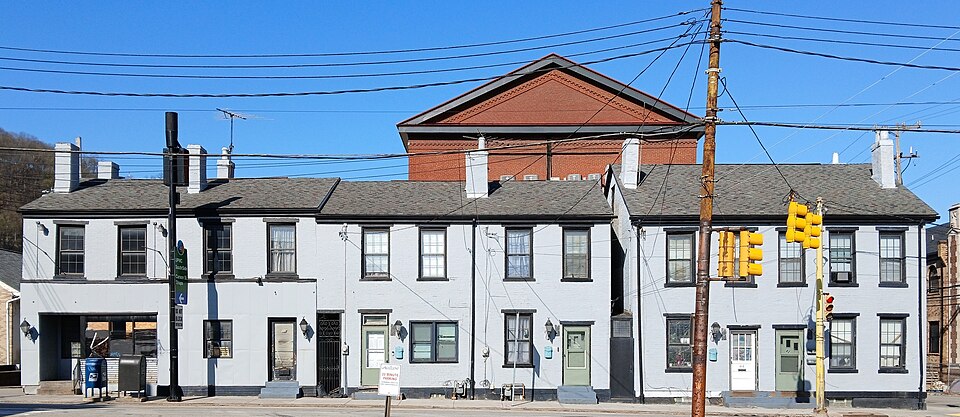
It is a little hard to date these houses on South 10th Street from old plat maps, and any South Side historians who have good information are earnestly invited to enlighten us. The two on the right end are separate from the rest and slightly larger. A row of houses appears on this land in 1872, belonging to someone named Thomas. In 1882, however, all but the two houses on the right are gone; the rest of the land is vacant. By 1890 the row is full again, still belonging to the Thomas family, except for the last house on the left, which belongs to someone named Todt.
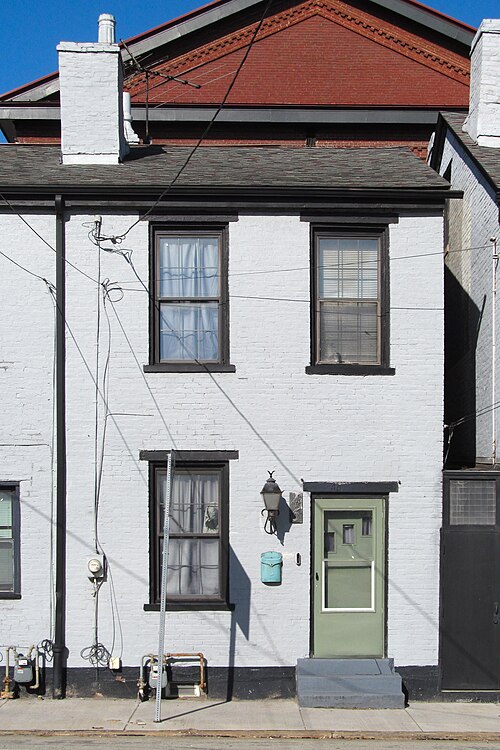
Father Pitt’s best guess, then, is that the two houses on the right date from the Civil War era. The rest of the houses might have burned in about 1880, and were rebuilt in what was still the usual vernacular style for small rowhouses. But this is only a wild guess, and more information would be welcome. It is, after all, possible that the 1882 map was wrong, and the houses never went away.
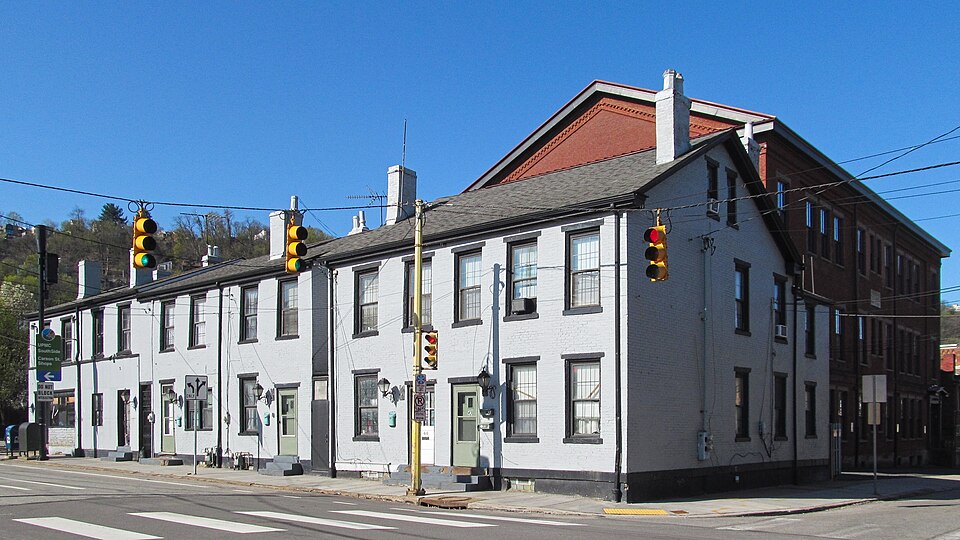
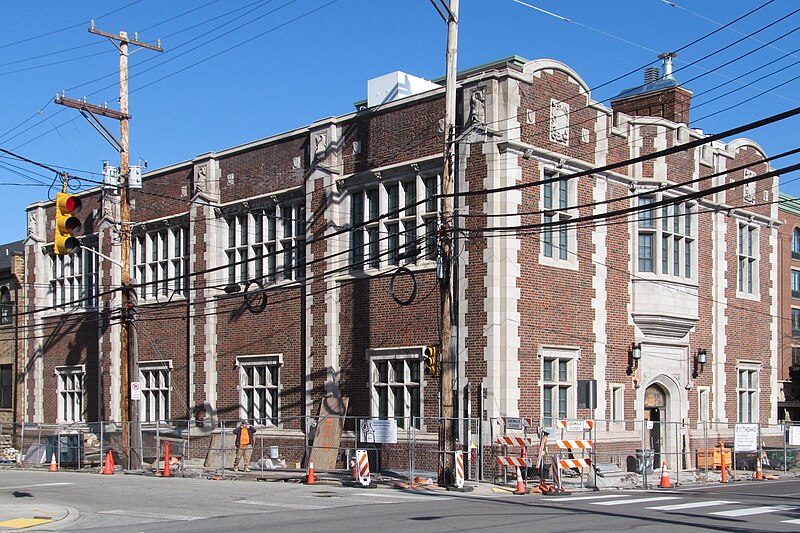
The Oliver Bathhouse, built as the South Side Baths but soon renamed for its donor (who had died in the long delay between the donation and the construction), has been getting a thorough restoration and renovation. The outside of the building looks almost brand new.
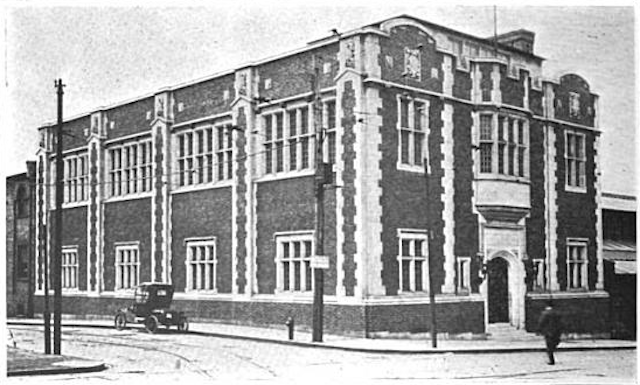
This picture from Preservation Pittsburgh’s collection is dated January 31, 1913, at Wikimedia Commons, but that is an error. In the Construction Record for May 30, 1914, we read, “Architects MacClure & Spahr, Keystone building, will lake bids until June 1 on the erection of a brick, stone and terra cotta fireproof bath house on Tenth and Bingham streets, for the Henry W. Oliver Estate. Cost $100,000.” The building might have been finished by January of 1915 if the construction got started right away. Wikipedia concurs that the building was finished in 1915. Since this picture was taken from a printed source, we suspect that a poorly-scanned “1918” might have been misread as “1913.”
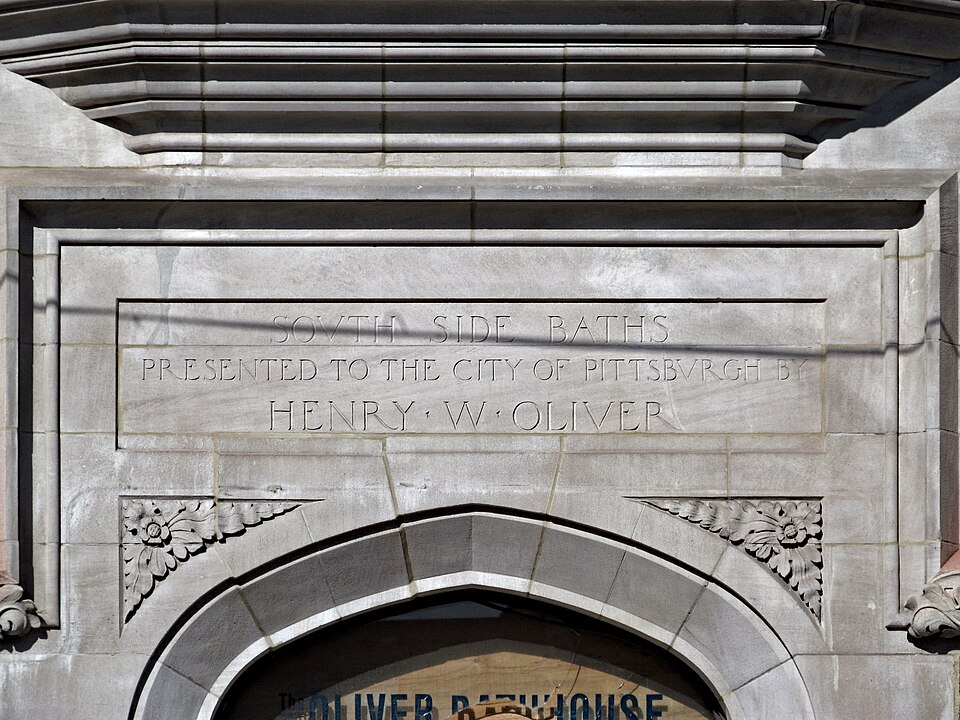
Oliver’s steel mills nearby employed many of the workmen who would benefit from these baths. He might not pay them enough to afford more than squalid tenements with inadequate bathing facilities, but he was willing to spend enough to make them smell better on Saturday nights.
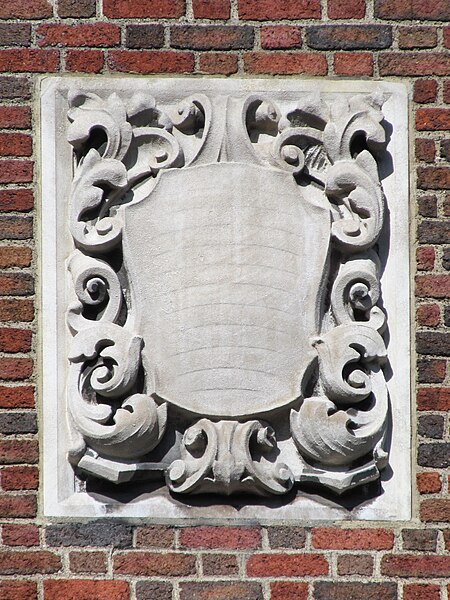
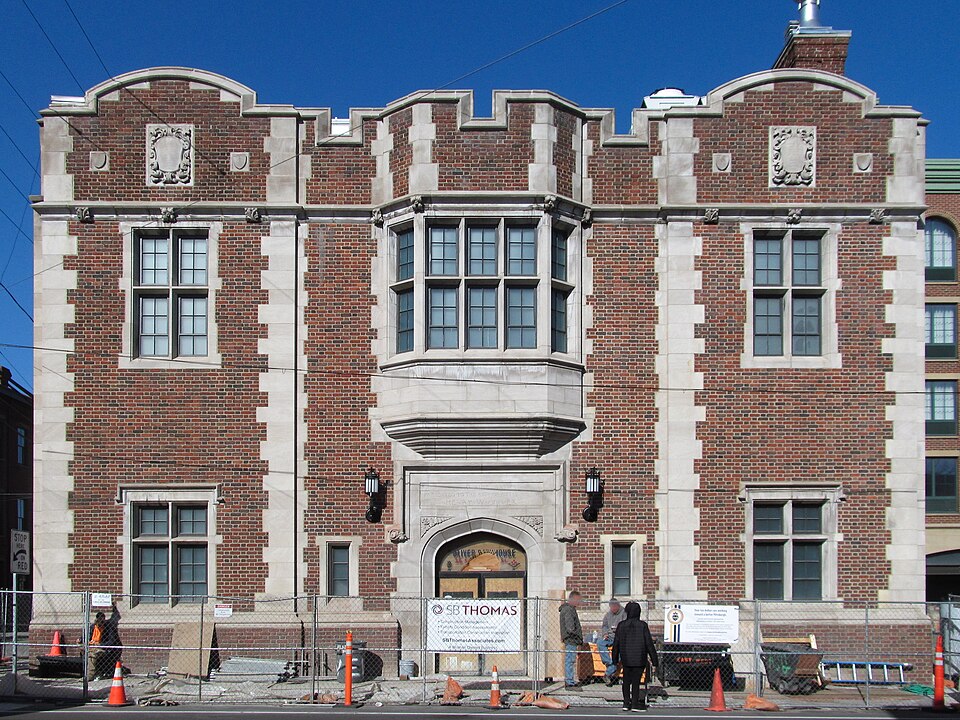
The Oliver Bathhouse survives as a bathhouse, uniquely among the public baths in Pittsburgh, because the more upscale denizens of today’s South Side appreciate its large indoor swimming pool, the only city pool open in the winter.
More pictures of the Oliver Bathhouse.
Map.

The colossal Pittsburgh Terminal Warehouse and Transfer Company Buildings required streets to be closed and diverted to accommodate them. McKean Street was diverted and became a canyon through the complex. Here we see the bridge on which Terminal Way, the street that runs through and on top of the buildings, crosses McKean Street.

A former bakery, now called “Birmingham Place,” between 23rd and 24th Streets on Carson Street. The adaptation was handled with good taste, preserving the attractive proportions of the building, including the huge windows that flood the place with natural light. According to the date at the top of the building, the main section was built in 1919; the section to the left was added after 1924, to judge by a Sanborn Fire Insurance map from that year on which the left wing does not appear.

The corner of Sidney Street and South 19th Street, where we find a Second Empire building with a beautifully kept storefront.

A particularly splendid mid-Victorian building from 1881, as we can see by the beehive date stone in the middle of the façade.

The architect would probably have told you that the style was Renaissance, but mid-Victorian architects were much freer in their interpretation of historical styles than the next generation would be.

Charles Geisler, who lived in the South Hills neighborhoods all his working life, was a successful architect who specialized in small to medium-sized apartment and commercial buildings. Much of his work had a tint of the Spanish Mission style. The ground floor of this building, put up in 1923, has probably changed, but the upper floors are unusually well preserved, with tiled overhang, nine-over-one windows, and carved wood brackets, making this an excellent example of Geisleriana.





This little building looks like the little brother of the building next door. Father Pitt has no direct evidence that Geisler designed it, but the two properties were under the same ownership in 1923. Given the notable similarity in the treatments of the rooflines, it is reasonable to suspect Geisler, even if we cannot yet convict him of the design.

The Rex is attributed to Geisler in city architectural surveys, although it has been remodeled more than once, and old Pa Pitt would not be surprised if one of those remodelings was under the direction of Victor A. Rigaumont, who had a prosperous practice converting the silent generation’s movie houses to up-to-date Art Deco palaces for the talkie era.


St. Vladimir’s has been in this building (the older one on the left, that is) for nearly a century, but if you think it doesn’t look like the sort of building a Ukrainian Orthodox congregation would build for itself, you’re right. If you’ve seen as many churches as old Pa Pitt has, you might think right away that this one has an Episcopalian look about it, and indeed it was built as St. Mark’s Episcopal Church. The Ukrainian congregation moved in in 1926. Here we see it in the middle of a snowstorm.


